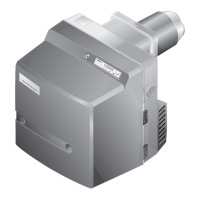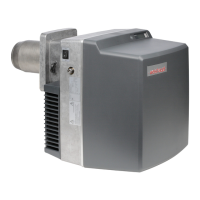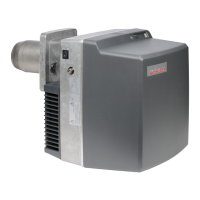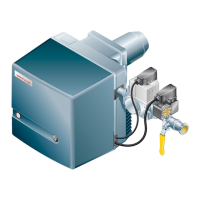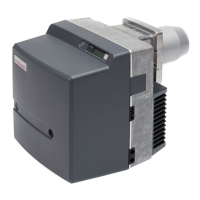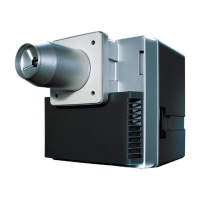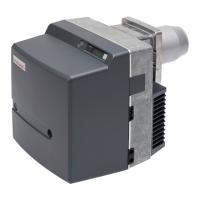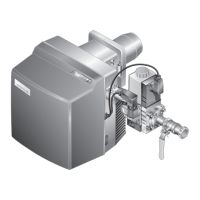
Do you have a question about the Weishaupt WG40N/1-A ZM-LN and is the answer not in the manual?
Manual intended for operators and qualified personnel.
Explanation of warning and information symbols used in the manual.
Details exclusions for guarantee and liability claims.
Specifies approved applications and risks of improper use.
Actions to take if gas is detected.
General safety measures and component lifespan.
Safety precautions for electrical work.
Regulations and procedures for gas supply installation.
Explains the model designation and its components.
Describes the main functional components of the burner.
Details air intake components and their function.
Details gas supply components and their function.
Describes key electrical components and their roles.
Lists and explains the burner's inputs and outputs.
Outlines the burner's operational phases during commissioning.
Provides key technical specifications for the burner.
Lists certifications and basic standards.
Details electrical specifications like voltage and current.
Specifies combustion heat ratings and provides a capacity graph.
Provides detailed physical dimensions of the burner.
Requirements for installation location and heat exchanger preparation.
Steps for mounting the burner and flange.
Instructions for rotating the burner for alternative valve train connection.
Safety warnings and general installation instructions for gas supply.
Procedures for installing the gas valve train.
Procedure for testing the gas supply line and venting.
Steps for connecting the burner electrically with safety notes.
Explains the function of the buttons and displays on the operating panel.
Describes the meaning of different displays and symbols.
How to access and view burner data in the info level.
Information available in the service level, including faults and flame signal.
Details parameters accessible in the parameter level.
How to configure settings relative to burner type or version.
Process for linearising operating points during commissioning.
Conditions that must be met before commissioning.
How to connect devices for ionisation current and mixing pressure.
Procedures for checking minimum and maximum gas connection pressure.
Steps for performing a soundness test on the gas valve train.
Steps for purging the gas valve train to remove air.
Determining and setting the pressure regulator based on tables.
Determining diffuser and air damper settings from a diagram.
Initial presetting of pressure switches during commissioning.
Procedures for adjusting burner settings like load and ignition.
Adjusting the burner settings for models without variable speed drive.
Adjusting burner settings for models with variable speed drive.
Procedure for checking combustion parameters like excess air and temperature.
Method for calculating the burner's gas throughput.
General safety precautions and notes before starting servicing.
Outlines the service intervals and procedures for various components.
Steps for removing and reinstalling the mixing head.
Instructions for setting the ionisation and ignition electrodes.
Procedure for replacing the combustion manager unit.
Information on recognizing and diagnosing fault conditions.
Lists faults and their rectification procedures, requiring qualified personnel.
Common operating issues and their solutions.
Details the sequence of operating statuses and functions.
Provides conversion values for pressure units.
Explains appliance categories for gas and dual fuel burners.
Lists additional requirements for burners based on standards and directives.



